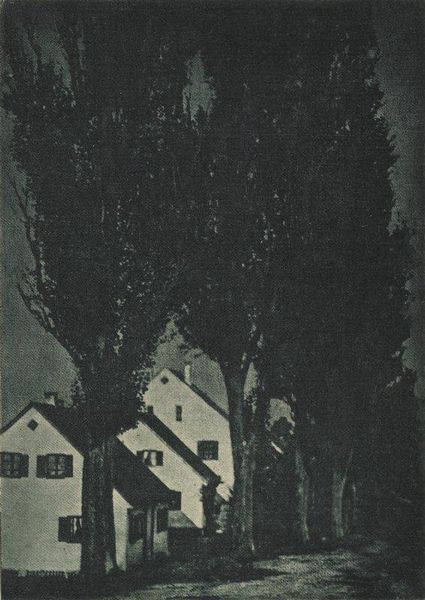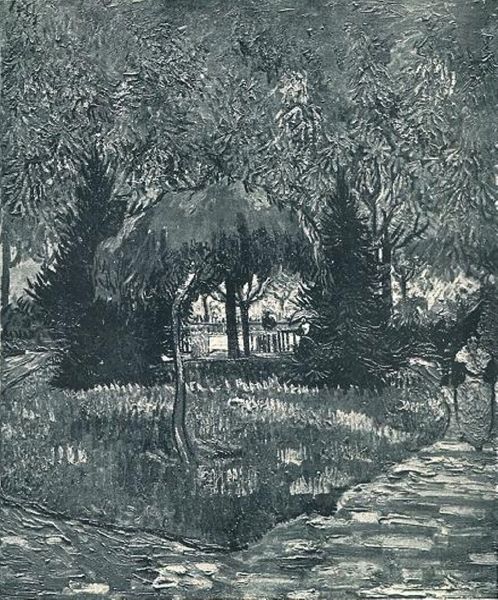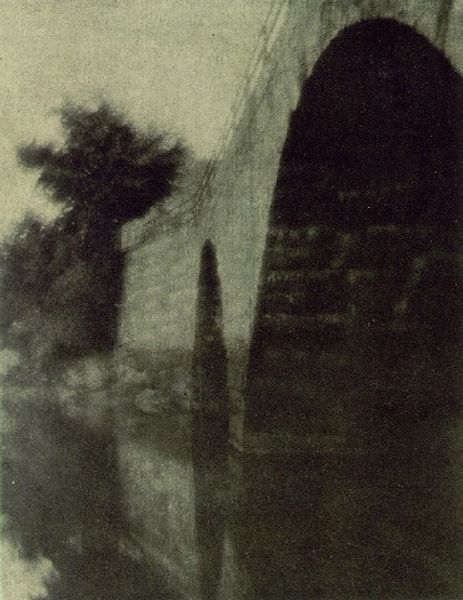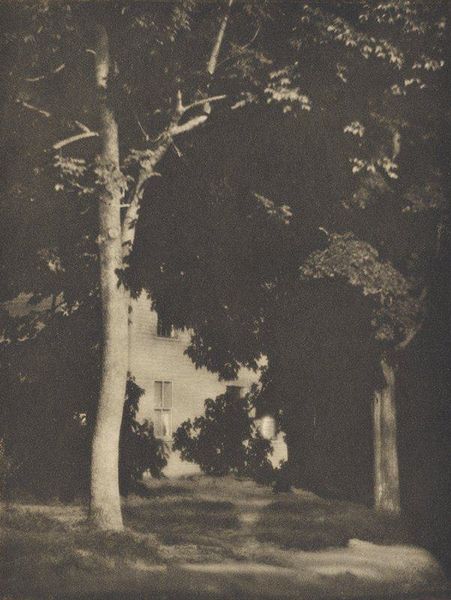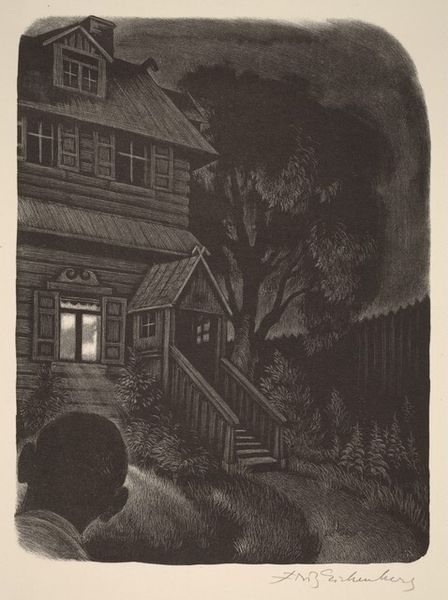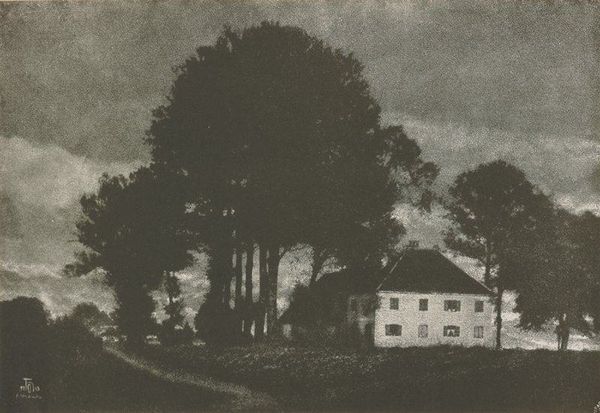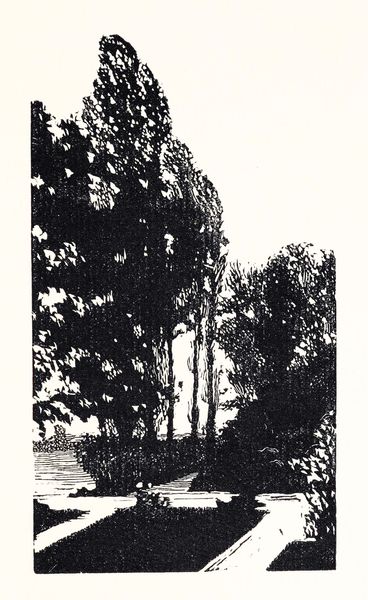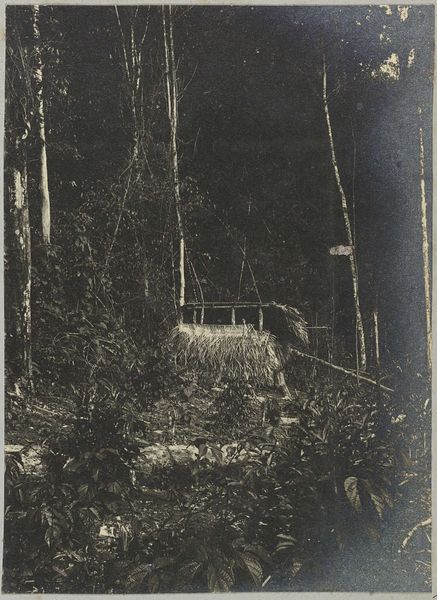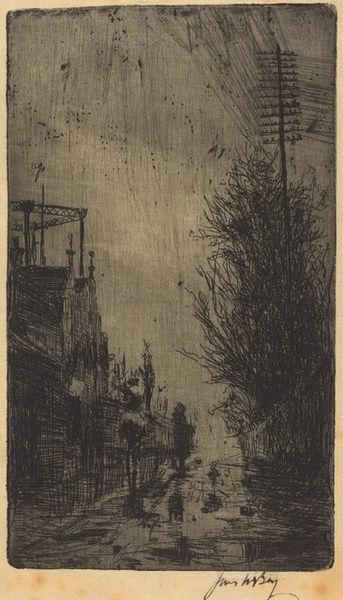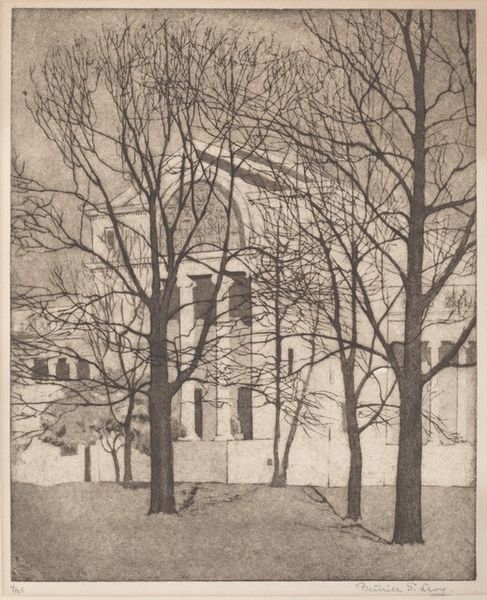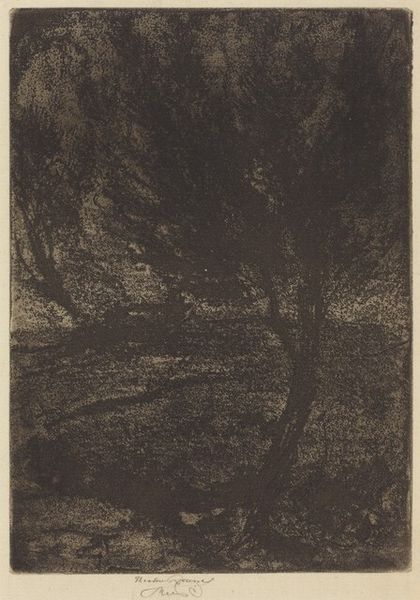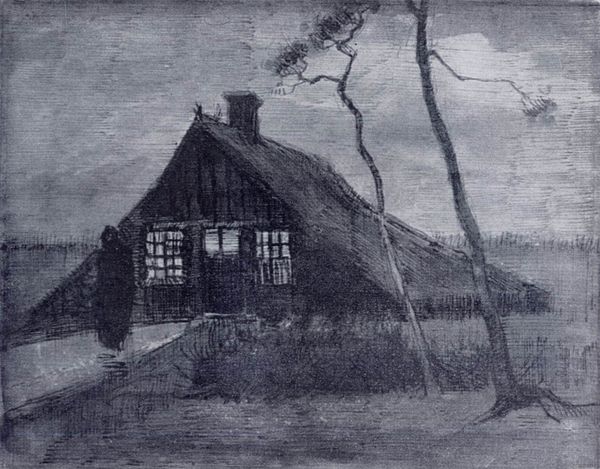
photogravure, photography
#
photogravure
#
germany
#
landscape
#
etching
#
german-expressionism
#
photography
#
cityscape
Dimensions: 7 1/16 x 5 in. (17.94 x 12.7 cm) (image)
Copyright: No Copyright - United States
This print, titled "Dachau," was made by Theodor Hofmeister, an artist active in Germany in the early twentieth century. It's an image rendered via photogravure, a printing process that combines photography and etching. Photogravure, which was popular at the time, allowed for the reproduction of continuous tones, giving prints like this one a unique visual texture. The artist would have started with a photographic negative, transferred the image onto a copper plate coated with a light-sensitive gelatin tissue, and then etched the plate in acid. Each print requires careful inking and pressing. Here, the dark palette conveys the somber mood, while the trees dominate the composition. The architecture almost disappears. Photogravure allows for a subtlety of detail, which seems fitting for a landscape now overwhelmingly associated with horror. Dachau was, of course, the site of the first Nazi concentration camp. Considering the print's laborious production and historical context reminds us of the intricate relationship between materials, making, and the profound weight of history.
Comments
No comments
Be the first to comment and join the conversation on the ultimate creative platform.
